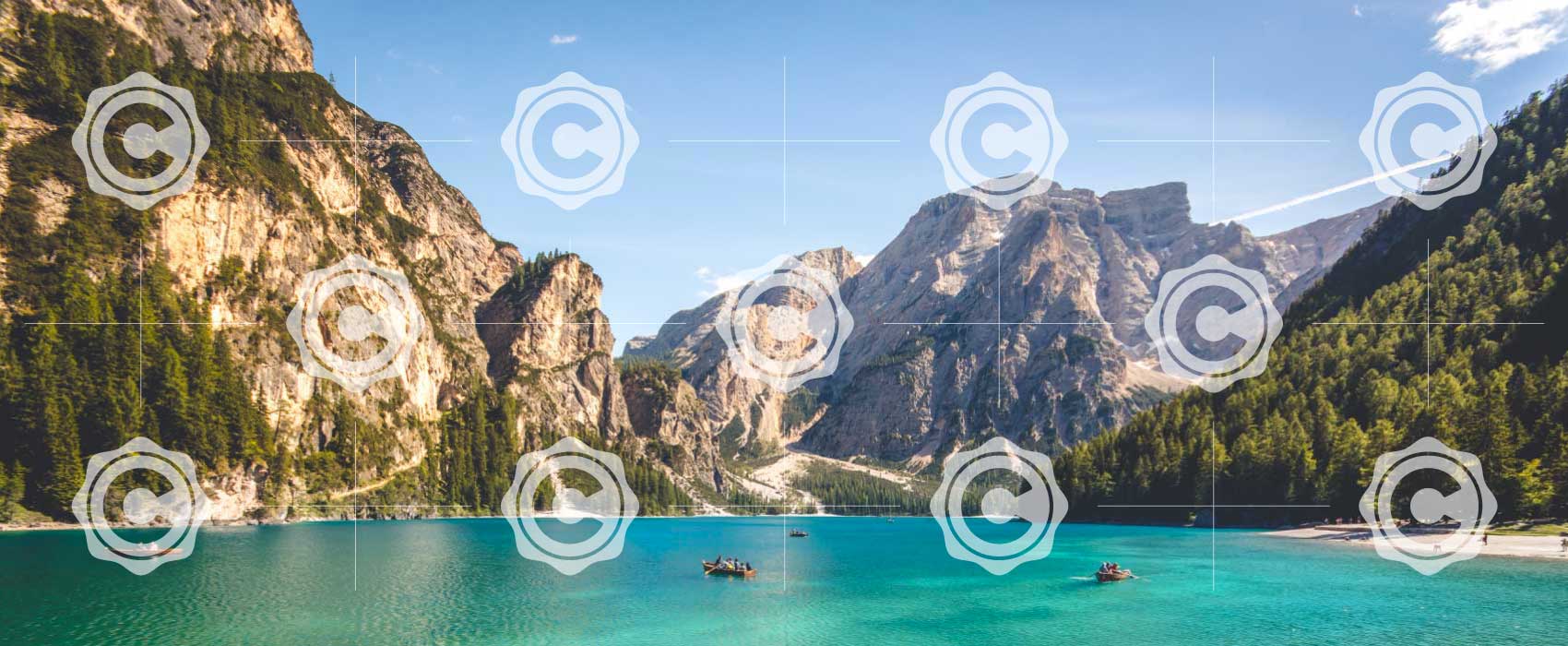
The history of the watermark starts long ago in the thirteenth century. Invented in Italy, the watermark aims to protect currency, postage stamps, and government documents from copying. Watermark standards haven’t changed much since then. A watermark is still a transparent and barely visible image overlay. Although it should not attract attention, a watermark should offer a distinctive and clear mark of authorship. Originally, a watermark was created by the pressure of wires on wet paper, slightly changing the paper’s texture. That’s how the watermark got its name.
Nowadays, watermarking is very popular in the digital world. Adding a watermark to an image is a common tactic to help deter image theft online. In addition, it has many other benefits like branding and business development. However, a watermark can easily ruin the perspective of your photo and decrease your sales. Many great photographers always watermark their photos; others never do. Basically, the decision of watermarking or not directly depends on your goals.
So, what are the arguments for and against watermarking? Is watermarking your photos worth the effort?
Why watermark?
Partial theft protection
Regardless of exactly how you decide to put a watermark on your photo, the thief will have to remove it. Even though you can’t protect your artwork 100% of the time, there is a good chance that a watermark will stop those who put the copy-paste process to use. Using a watermark is like locking your front door. It’s not an absolute guarantee you won’t be robbed, but most burglars will search out an easier target.
Signature
The tradition of signing an artwork started centuries ago. We can usually see signatures on all the great paintings throughout history. Perhaps putting your name might seem a bit arrogant, but what if you become famous? Also, in some cases, a watermark gives a photo a more professional, expensive, and complete look.
Branding
In general, branding is a far greater advantage than copy protection. All the users who download and share your photos, in fact, are giving you free advertising. Pictures with your logo, if unusual and interesting, quickly spread over the network, popularizing your brand. This may generate more traffic to your website and attract new customers to your business.
Increased Sales
If you are engaged in the creation of photos for sale, watermarking might help you to increase sales. When copying, the brand on the photo will automatically be promoted and popularized.
Moreover, adding a watermark will exclude the possibility of free download of pictures from your website. No one can then “just borrow” a photo for print, advertising, or other commercial use.
Why not watermark?
Loss of composition
Many believe that watermarking photos leads to loss of composition and atmosphere of the picture. If the watermark distracts viewers’ attention from the main idea of the photo, it can ruin the mood of your artwork. In some cases, it may even give the image a bit of a cheap, amateur look.
Time-consuming
Time is precious! You need to spend some time creating attractive watermarks for your photos. The required time investment will depend on the complexity of watermark, the number of photos, and your skills.
Weak protection
In fact, placing the name of your website in the photo corner is weak protection. You can easily get rid of it by simply cropping a photo with any graphic editor. Also, many agree on the idea that a watermark does not provide any legal protection. If you are going to fight to prove your authorship, you will definitely need more serious evidence.
Decrease in sharing
Some users may be less likely to share a watermarked photo on social networks like Instagram or Pinterest. This means reducing the popularity of your page or blog. Although it’s definitely something to consider, a tasteful tiny signature can be a solution.
Watermark smart!
It is clear that watermarking your photos can be highly beneficial. However, when placing a signature or watermark, consider these guidelines:
- Don’t limit yourself to words or logos. For example, a certain framing style can be a part of your signature style—yours. Example of Hans using mask frames (grunge, monochrome to create borders)
- Respect your viewers. Don’t watermark too small or low-quality photos.
- Make the watermark translucent (not at full opacity), so it will be less distracting for the viewer, yet stand out from the background of the picture.
- The text of a watermark should be as short as possible (name, domain name or graphic logo of the website).
- The text or logo on the watermark should be clearly visible.
- Size matters! If your watermark is too big, it might distract the viewers’ attention from your photo. If it’s too small, nobody will see it. Find a compromise.
Make sure the first thing that is seen by the viewer is your focal point and not the watermark. The composition and mood of the photo are the most important things to make it likable.
ImageFramer 4: Your art. Showcased.
Download the best-in-class Mac app for adding photorealistic frames and mats to photos and artwork today.


